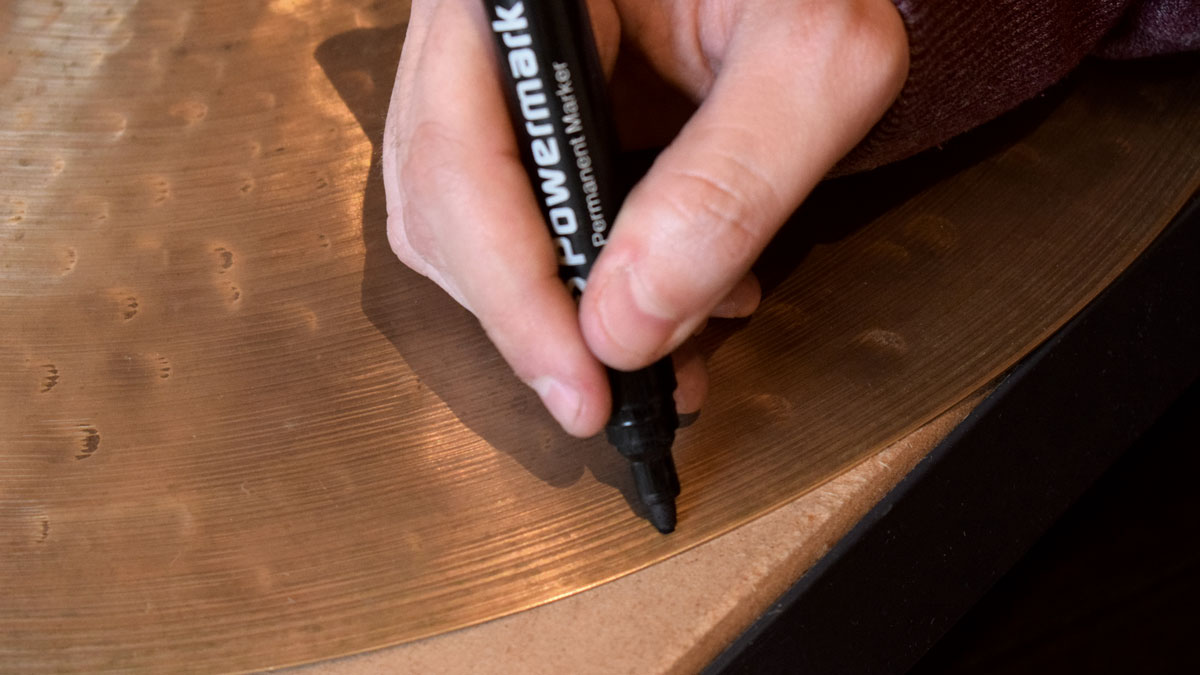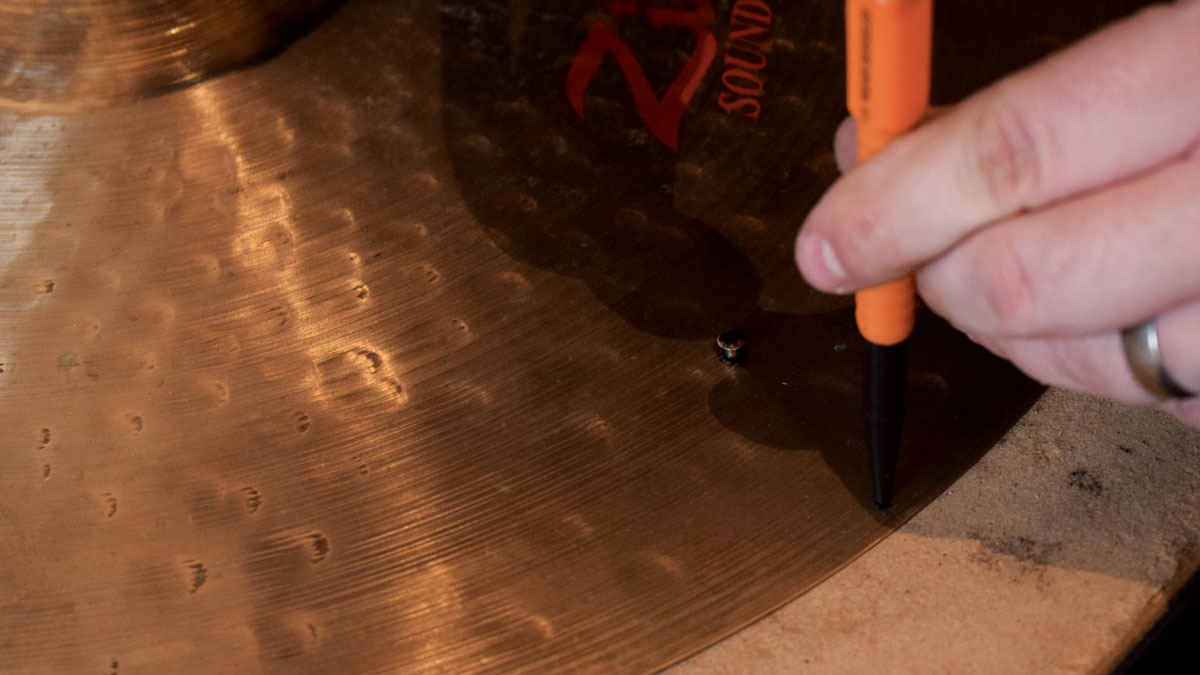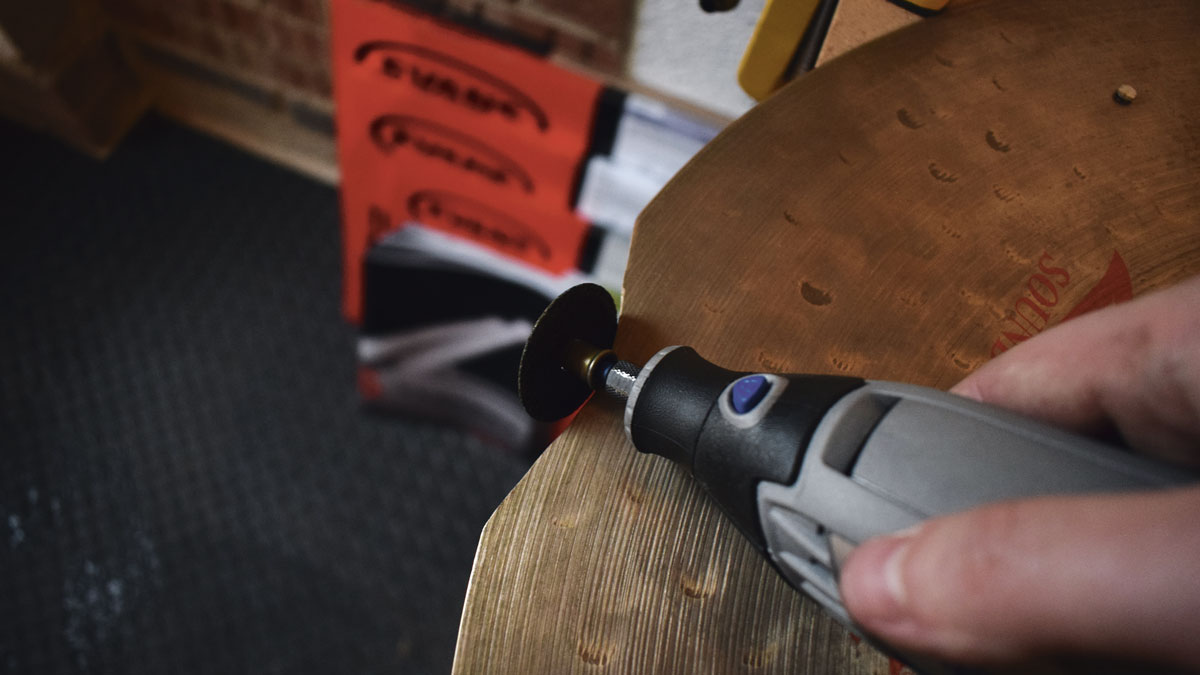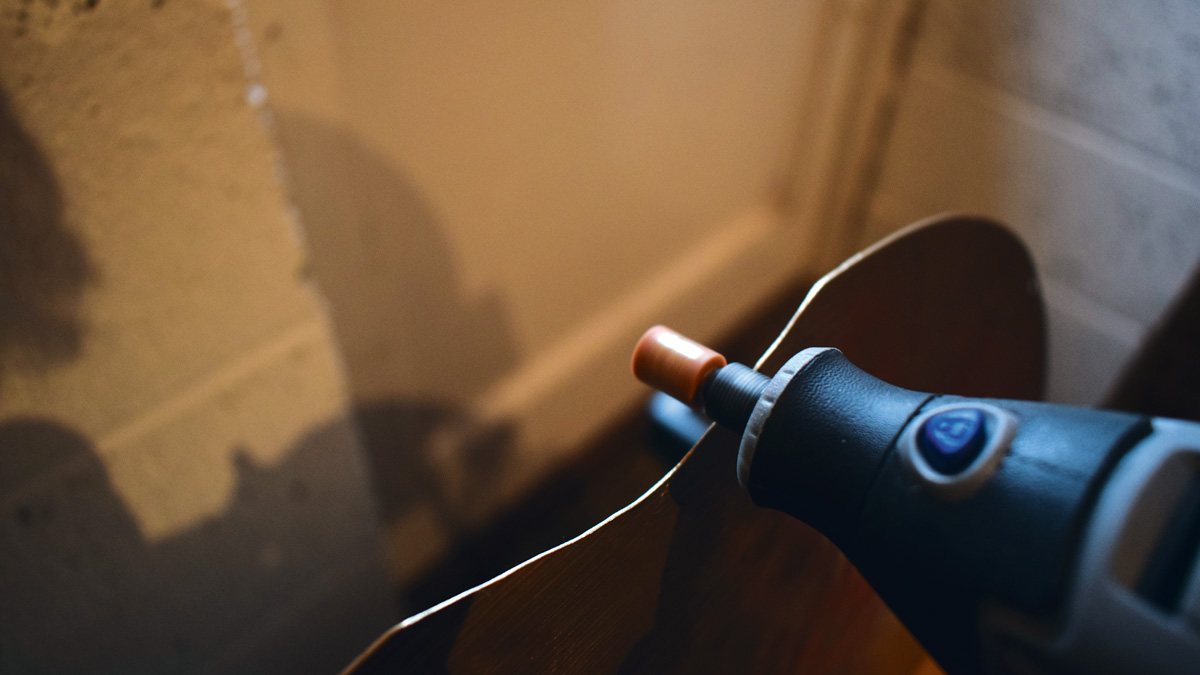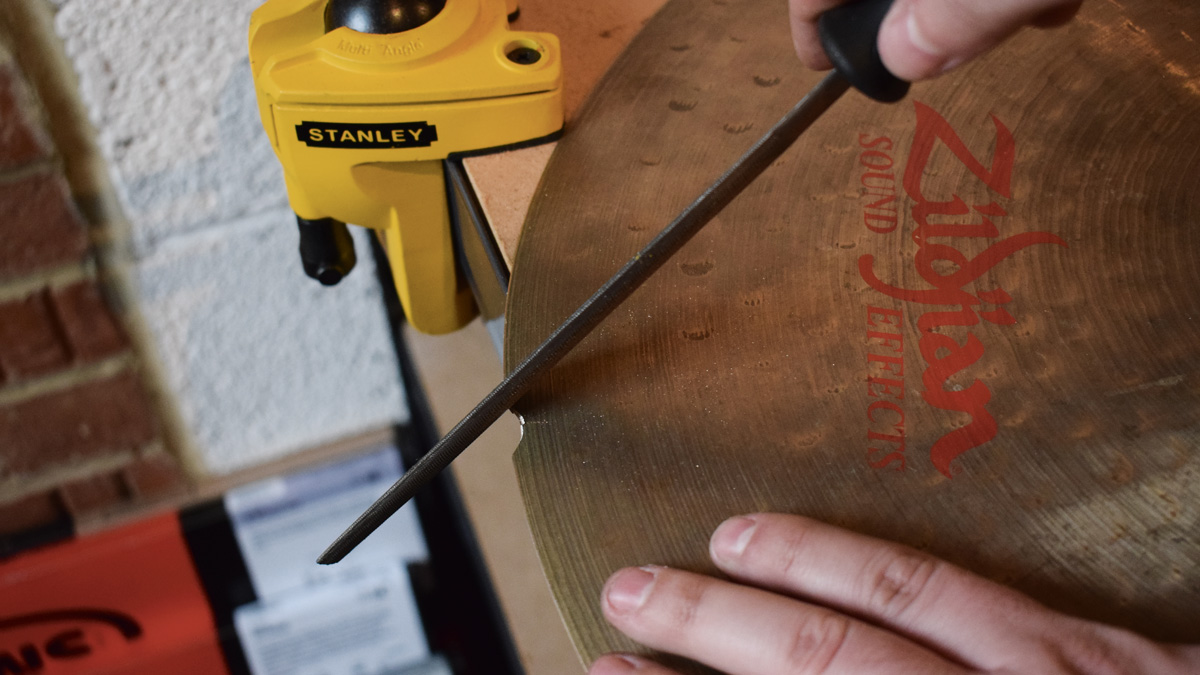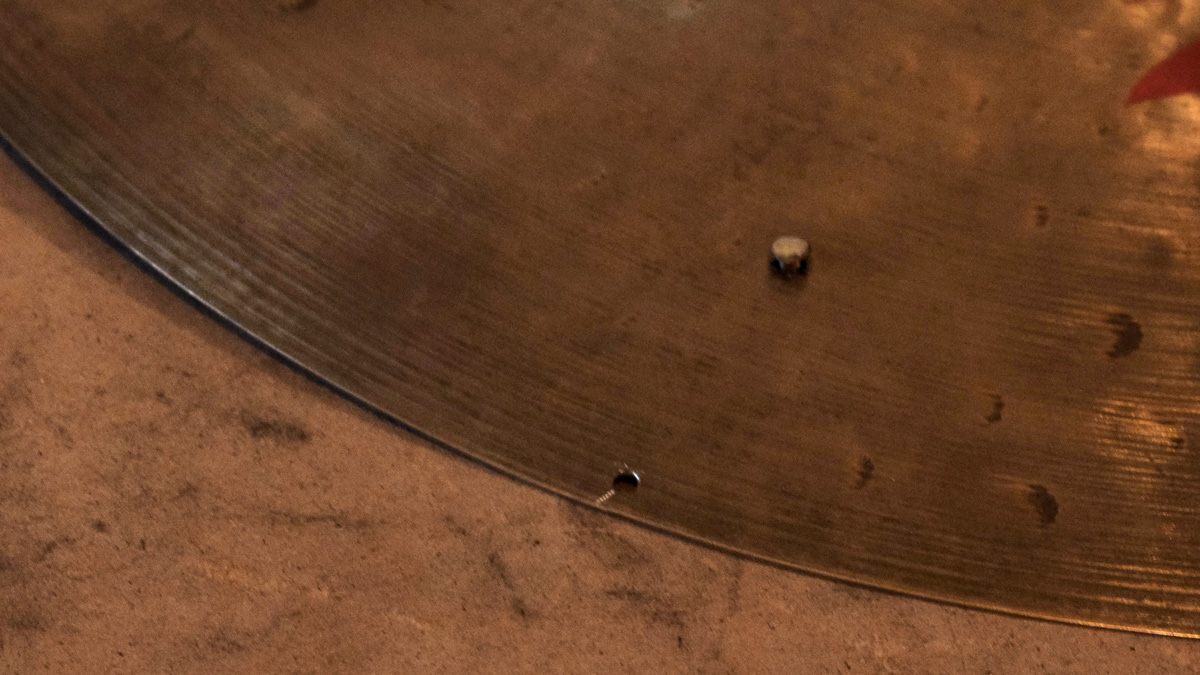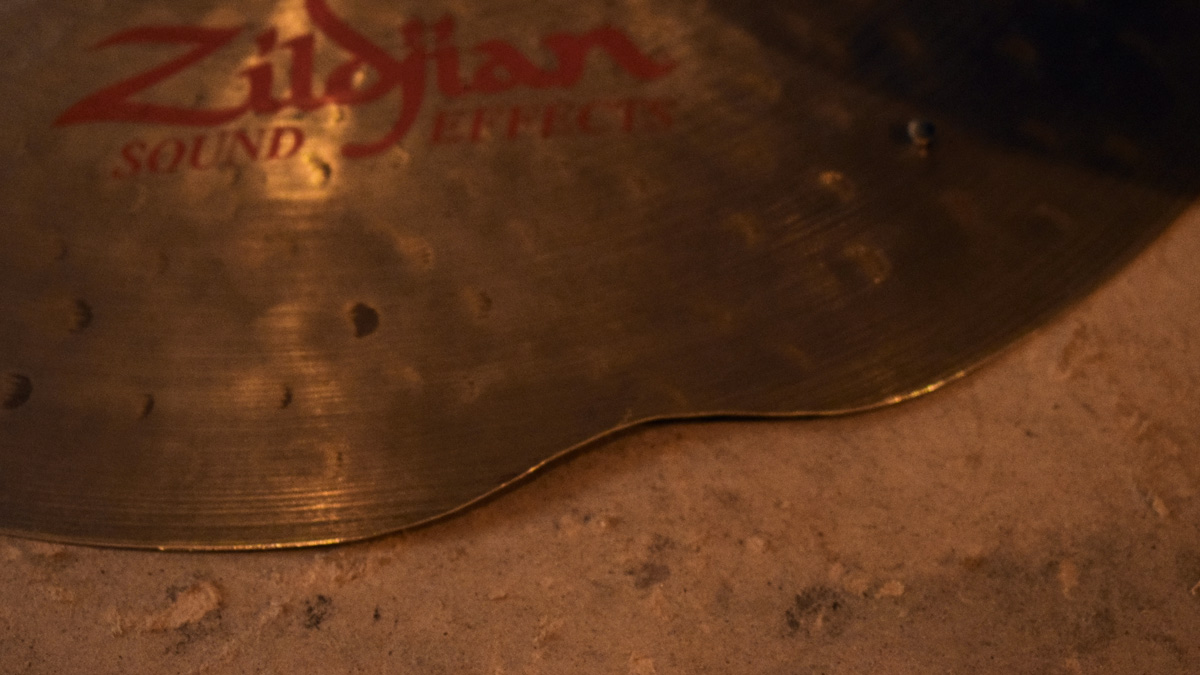The Workshop: How to repair a cracked cymbal
In 10 easy steps!

1. Identify the crack
Drumming is an expensive enough game as it is, never mind when your beloved gear decides to give up the ghost.
Cracking a cymbal, though, doesn’t have to mean game over. The following steps will add extra longevity to your prized metals.
1. Identify the crack
Most cracks will start from the edge and travel inward toward the bell, although some appear horizontally across the bow.
If yours is the latter, the best option is to drill the crack which we will cover first. In the event of the edge split, we’ve also played out a couple of other options.
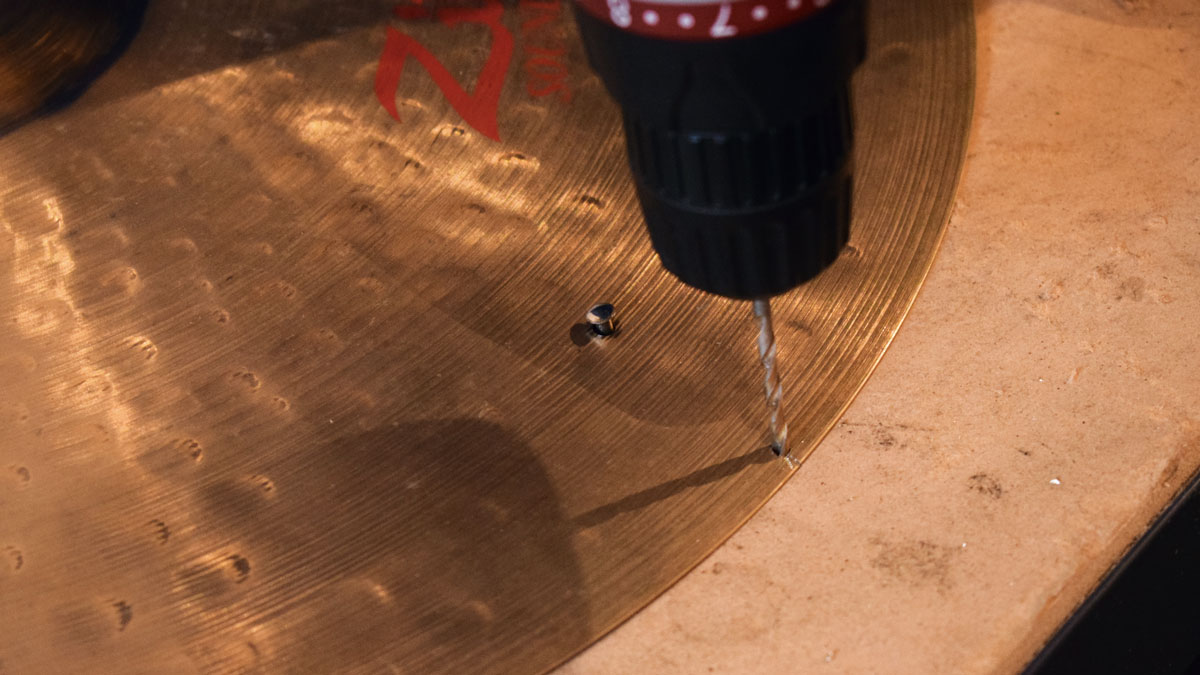
4. Drill
Using a specific metal drill bit is definitely advised here as it will cut through the bronze with ease.
The larger hole you drill, the more effective it will be against the crack spreading, although it will also have more effect on the tone of the cymbal. For this tiny crack we are using a 4.5mm bit.
Tom is a professional drummer with a long history of performing live anywhere from local venues to 200,000 capacity festivals. Tom is a private drum tutor, in addition to teaching at the BIMM Institute in Birmingham. He is also a regular feature writer and reviewer for MusicRadar, with a particular passion for all things electronic and hybrid drumming.
